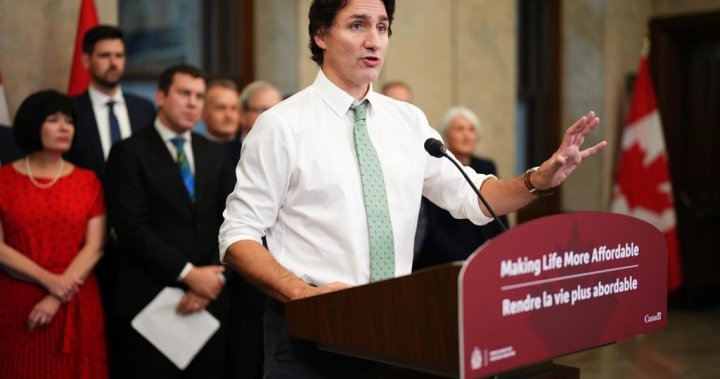Inflation is continuing to bite Canada’s restaurant industry, as sales have dipped across the country and consumers are facing higher menu prices.
Data from Statistics Canada released Monday showed that the prices for food purchased from restaurants increased by 5.1 per cent year over year in January, continuing a trend seen last year.
Prices for alcohol beverages served in licensed establishments were also up by 5.3 per cent compared with the same time last year.
Meanwhile, overall seasonally adjusted restaurant sales dipped by 1.9 per cent to $7.9 billion in January, according to StatCan.
Full-service restaurants saw the steepest decline in sales, dropping 6.4 per cent annually, followed by special food services (-1.8 per cent) and drinking places (-0.5 per cent).
Only limited-service eating places reported higher sales in January, increasing by 2.4 per cent.
The head of Restaurants Canada, a national food service association with almost 30,000 members across the country, said the StatCan data is “pretty frightening” for an industry that is still reeling from the effects of the COVID-19 pandemic closures.
“We’re seeing the impact of our customers having a lot less discretionary spending due to inflationary pressures, and we have been feeling the inflationary pressures for some time now,” said Kelly Higginson, president and chief operating officer at Restaurants Canada, in an interview with Global News.
Higginson said restaurant businesses are seeing cost increases across the board, including food, equipment, repairs, utilities, wages and insurance.
“There’s only so long that you can have sales in decline and costs going up before you’re going to see the real impact,” she said.
January sales at food services and drinking places were down in seven Canadian provinces.
British Columbia (-6.9 per cent), Saskatchewan (-1.3 per cent), Quebec (-1.2 per cent) and Ontario (-1.1 per cent) saw the largest declines, StatCan said.
Financial news and insights
delivered to your email every Saturday.
Meanwhile, eateries in Nova Scotia (+2.3 per cent), Newfoundland and Labrador (+1.5 per cent) and New Brunswick (+0.1 per cent) saw their monthly food service sales go up.
Sylvain Charlebois, director of the Agri-Food Analytics Lab at Dalhousie University, said on top of higher menu prices, there is also less competition in Canada, so fewer options for people when eating out.
Even though overall inflation has eased in recent months, thanks to some relief at the grocery stores, Canadians are still grappling with a high cost of living.
As a result, these inflationary pressures are changing customer habits in a “frugal market,” Charlebois said.
“Food prices are incredibly problematic for consumers and so they’re looking for cheaper options,” he said.
So, if people do want to eat restaurant food, they would ideally go for takeout or get it delivered at home to save money on tipping, which is seen as a financial obstacle for many, Charlebois said.
Canadian restaurant goers are also avoiding drinking alcoholic beverages when they dine out, he added.
Charlebois said the best way to afford dining out is to just focus on one main dish and avoid ordering side dishes, such as extra bread, drinks, dessert or salad, as those items can add up in the bill.
“It may actually be a shorter meal, but it’s a meal that you probably can afford,” he said.
For fast-food orders, Charlebois advised going for the combos to save as much money as possible.
If you’re dining with a group, sharing appetizers and having a tapas style meal is another way to cut down your restaurant bill, Higginson said.
The food industry, along with travel, was one of the hardest hit sectors by the COVID-19 pandemic due to lockdowns and other coronavirus restrictions.
In a recent survey conducted by Restaurants Canada, 62 per cent of restaurants said they were operating at a loss or barely breaking even, up from 10 per cent pre-pandemic.
Many businesses have also been forced to shut down, with 44 per cent reporting bankruptcies — the highest annual level in a decade.
“There’s still a lot of pressure on the industry … and they’ve got a lot of debt coming out of four years of a significant volatile period,” Higginson said.
Inflation has also forced restaurants to change or slim down their menus to cut food wastage, while also using more cost-effective ingredients.
There has also been an increase in restaurant loyalty programs and other creative experience offerings to entice diners, Higginson said.
She called on all levels of government to support the food service sector through a “challenging period.”
“We do continue to work with all levels of government to try and make sure that the industry can find stability after these four years, but we really have to impress upon the government that there’s got to be a do-no-harm approach to any policy that could increase costs for our industry and for all small- and medium-sized businesses, for that matter.”
© 2024 Global News, a division of Corus Entertainment Inc.




